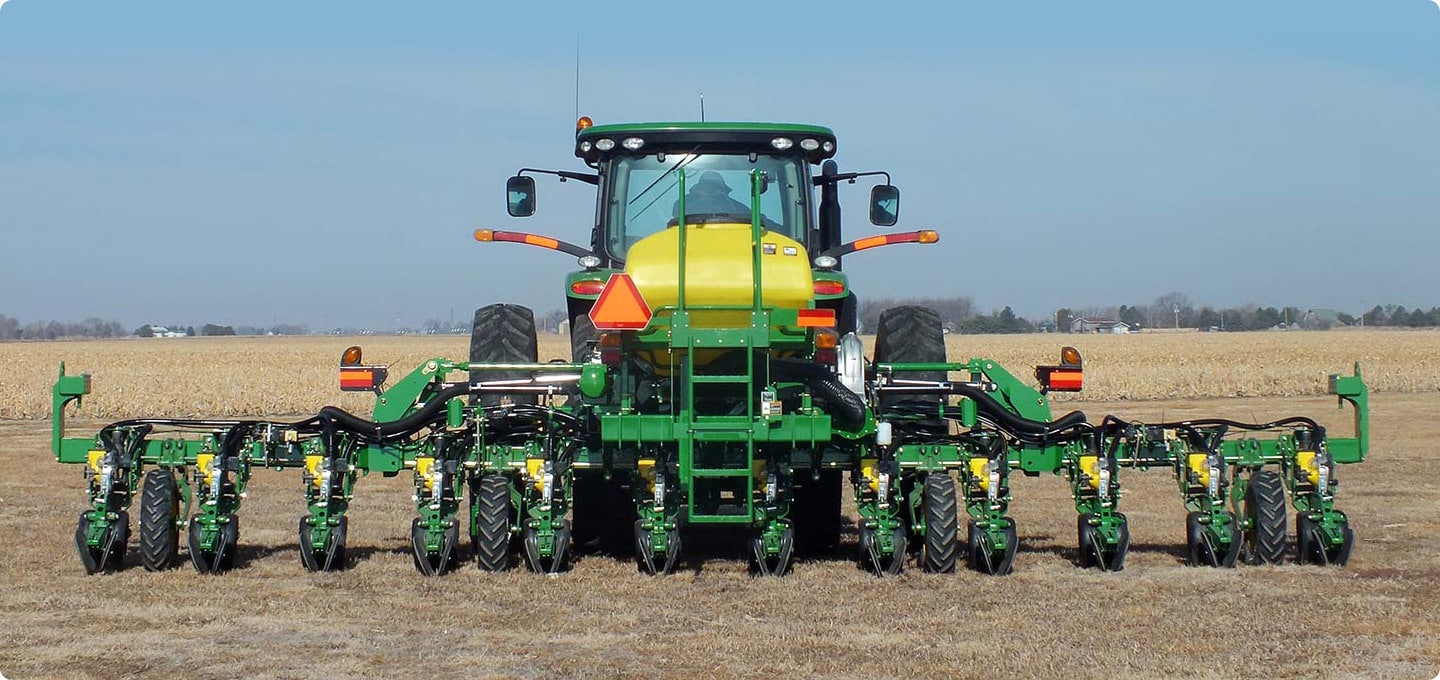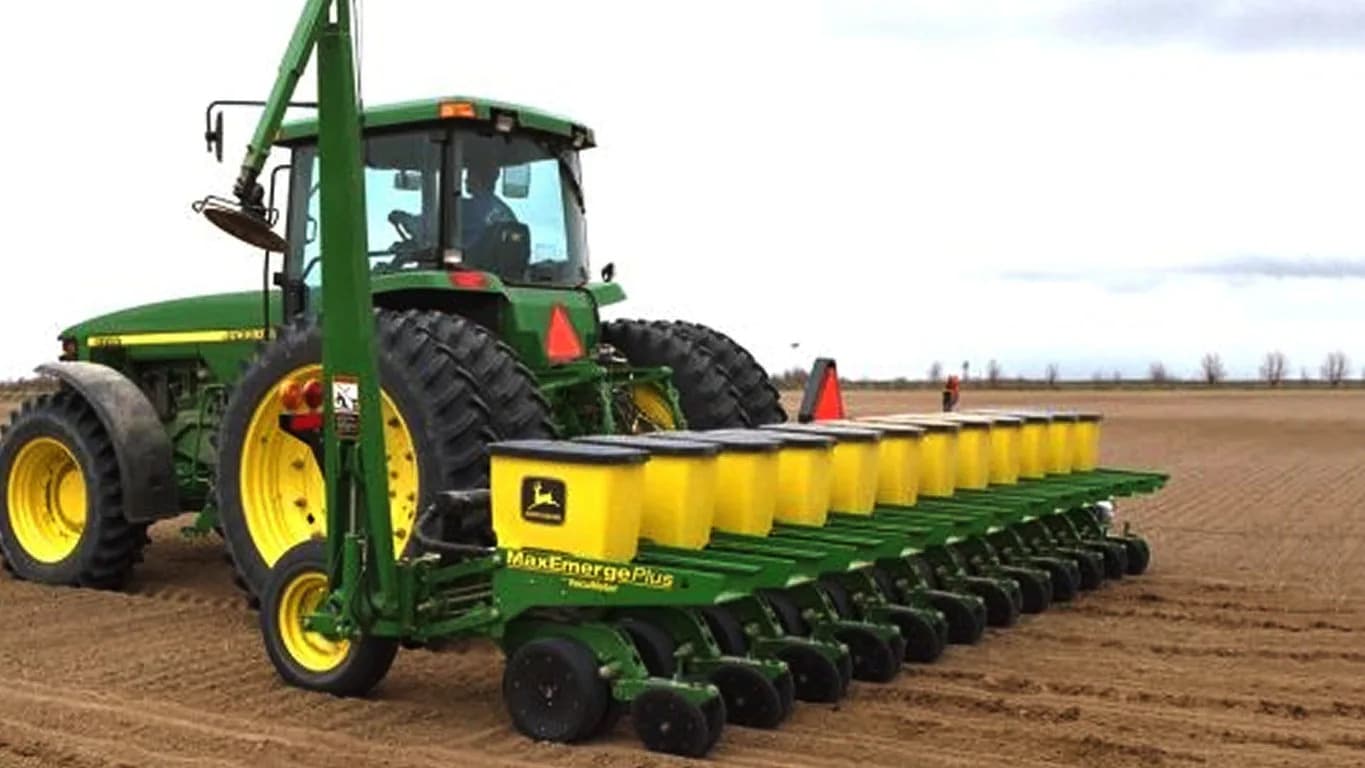Planter Row Units – Important Planter Maintenance Tips
The planter row units are vital components requiring special attention to ensure they function efficiently and don’t let you down during planting.
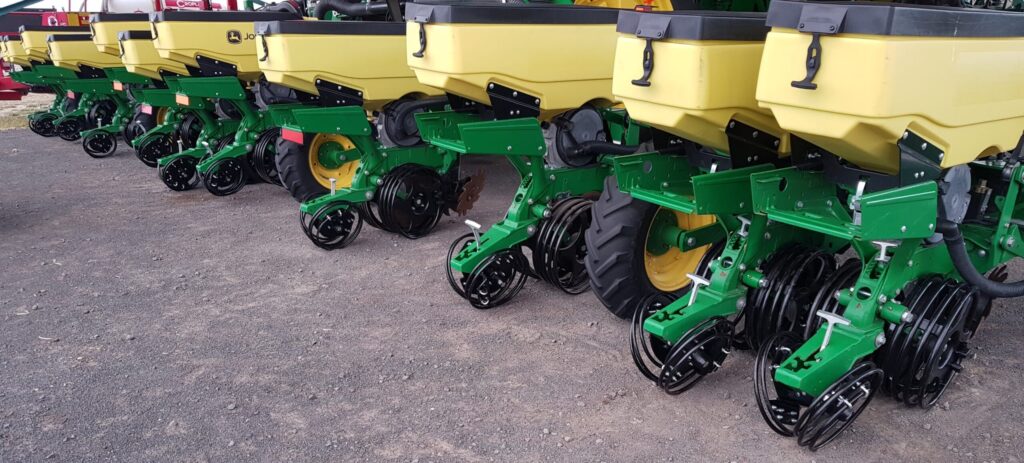
Better yields with good planter row unit maintenance
The planter's primary function is to create a trench in the soil efficiently, deposit the seed at the desired depth, and cover it with soil.
For your planter to perform optimally, it is essential to ensure that all its components, especially the planter row units, are in excellent condition.
Below are some tips on planter maintenance for your upcoming planting season.
Opening Discs on your Planter Row Units
The opening discs are one of the most critical components of the planter's row units. They are responsible for creating the seed trench in the soil.
If your opening discs are worn or damaged, the trench they create may not be of the correct shape, depth, or width. As a result, the seed placed may not be at your desired depth, resulting in uneven emergence and poor yields.
Most seed discs are 15 inches; experts recommended that farmers should regularly inspect the opening disks and replace them when worn past 14.5 inches.
Shimming
Incorrectly shimming your opening discs is another critical factor impacting seed placement. The shims help ensure the opening discs make the correct V-shape trench in the soil.
The ideal contact area for your opening discs should be between 1.5 and 2 inches. Using business cards to shim the opening discs is an effective method to ensure the correct spacing. You can do this by sliding one card in at the bottom and another at the top of the contact areas.
If your shimming is too tight, it can cause premature bearing failure. If the shimming is too loose, the trench may not be V-shaped but w shaped, resulting in uneven seed placement.
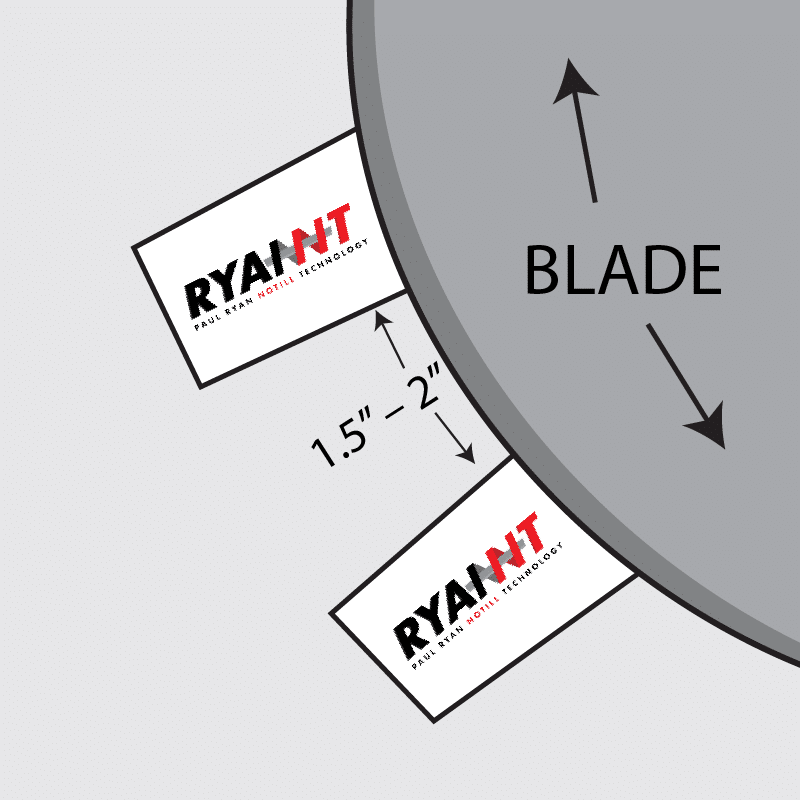
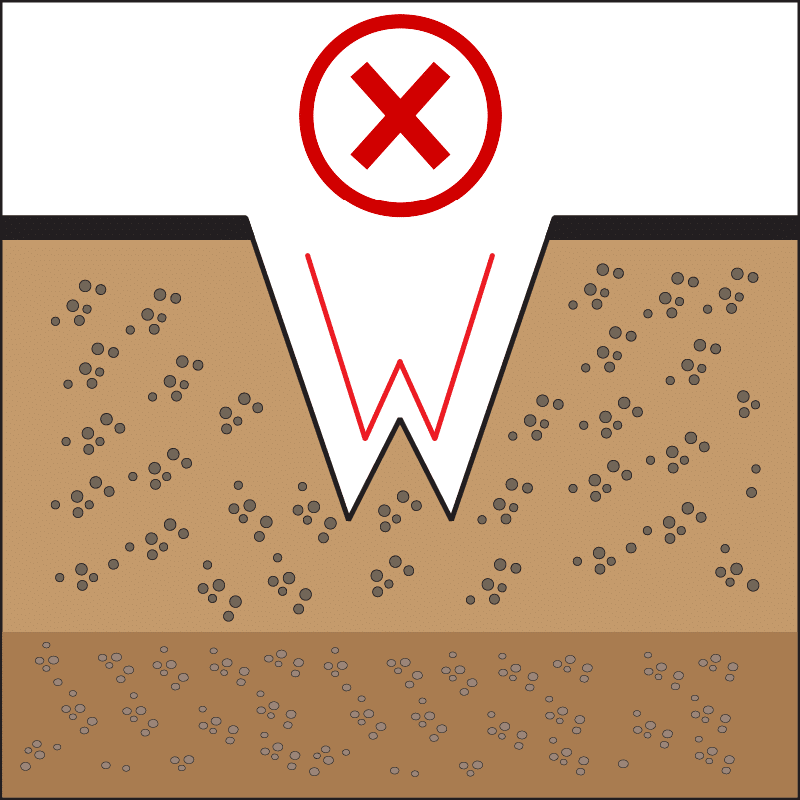
Seed Tube Guard
You should replace the seed tube guards when replacing your opening discs. The guard width is crucial in keeping the edges of the opening discs away from the bottom of the seed tube, which can prevent damage and inconsistent seed placement.
The guard also plays a role in holding the opening disc apart, which allows the seed to reach the bottom of the trench.
Additionally, the shape of your seed trench can also impact seed placement. A “U” shape, rather than a sharp point, at the bottom of the trench, can help prevent your seeds from being placed too shallow.
It's essential to follow manufacturer guidelines when replacing opening disks and seed tube guards to ensure the proper functioning of the equipment.

Gauge Wheels on your planter row units
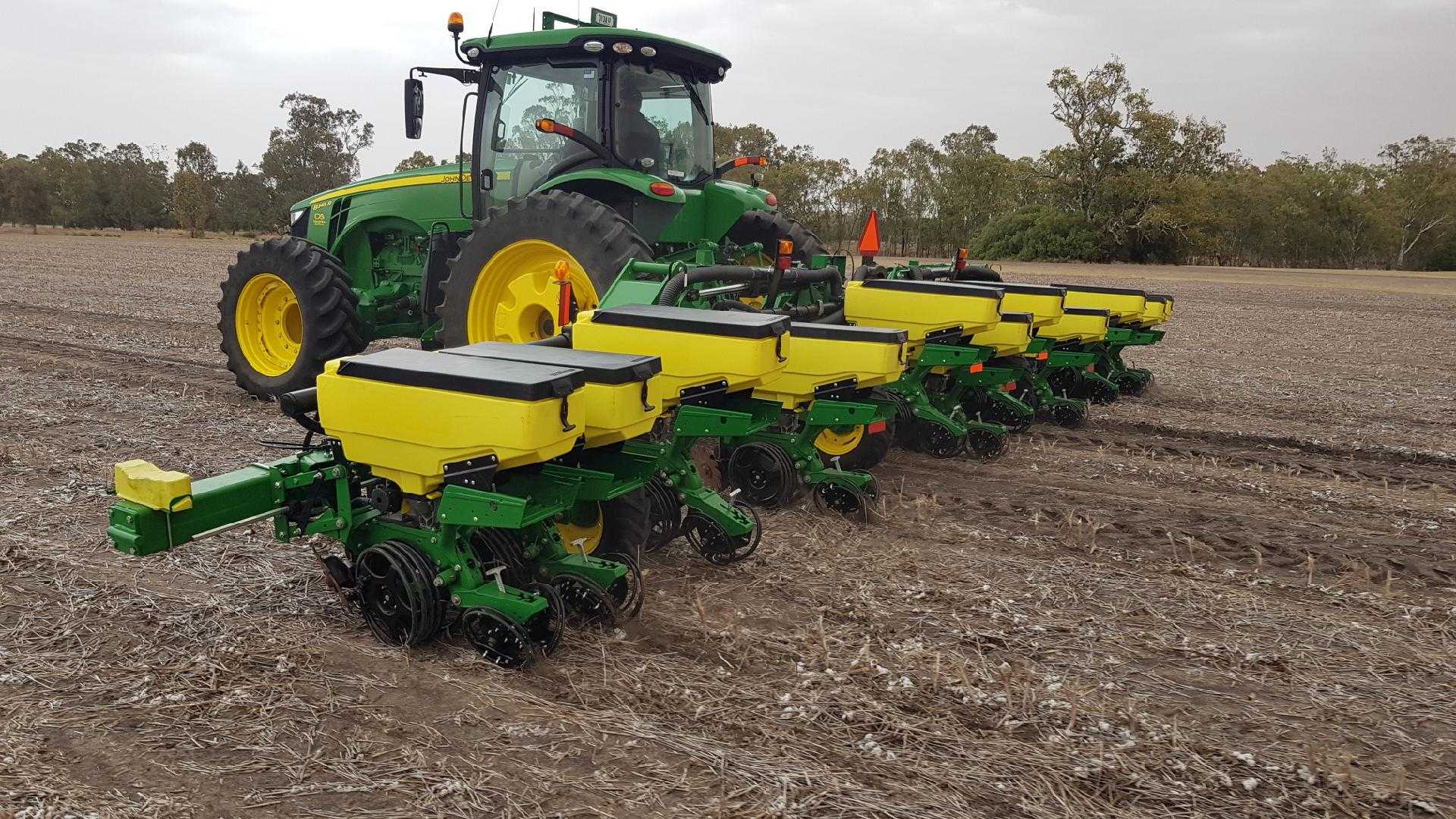
RYAN NT Coil Gauge and Closing Wheels on Maxemerge Planter Row Units
The gauge wheels are another essential component of your planter's row units. They help ensure your planter runs at the correct depth and maintains accurate seed-to-soil contact.
It is recommended to adjust your gauge wheels to make very slight contact with the opening discs when pulled away. If your gauge wheels are too tight, they may not turn freely, which can cause premature wear. Alternatively, you get uneven emergence if the gauge wheels are too loose, as dry soil may fall into the trench before the wheels cover it with soil.
When selecting a gauge wheel, you should be mindful of the gauge wheel width, either narrow or wide. An optimum gauge will eliminate row bounce. Narrow gauge wheels are known to eliminate row bounce, especially when using a residue management system.
Below are some scenarios to consider when deciding on a narrow or wide gauge wheel width for your planter:
Residue management:
A narrow wheel may be better suited to avoid row-unit bounce and maintain consistent planting depth if you run a residue management system that creates ridges or root balls.
Down pressure system:
If you have a hydraulic or pneumatic down pressure system, you can control the pressure on each row individually, making it easier to use a narrow wheel and maintain consistent planting depth.
Farming Practice:
Such as, practising no-till tillage farming and running a CCS (Centre Fill) Planter with a pneumatic down pressure system. In this scenario, you are not disturbing your soil (making your ground harder), have your seed in a tank centred on the planter, and control the down pressure across the whole planter bar; there is little risk of adding too much weight on each row. So the advantage of eliminating row-unit bounce with a narrow wheel outweighs the risk or chance of planting the seed too deep.
Planter type:
If you're running a box planter where each box is weighty when full, or running a spring-down pressure system that needs to be manually adjusted for each row a wider wheel may reduce the risk of planting too deep due to flotation issues.
RYAN NT Offers a universal width gauge wheel
Choosing a narrow or wider wheel will ultimately depend on your specific situation and equipment. Considering the above factors is essential to achieving consistent planting depth and optimal crop growth.
RYAN NT Offers a universal gauge wheel with a width that sits between a wide gauge wheel and a narrow Gauge Wheel. This gauge wheel performs efficiently on all planter types, including box and Centre Fill planters. This wheel eliminates row-unit bounce due to its coil wheel system.
Our system has swapped the conventional rubber wheel for a coil wheel. The coil wheel provides a cushioning effect when planting, eliminating row-unit bounce to provide you better seed placement. The wheels will drop into soil depressions, achieving more consistency and precision seeding depth.
Additionally, your old wheel tracks won't interfere with depth control and seed placement as they will with conventional wide gauge wheels. Finally, the coil's natural flex makes it a self-cleaning gauge wheel.
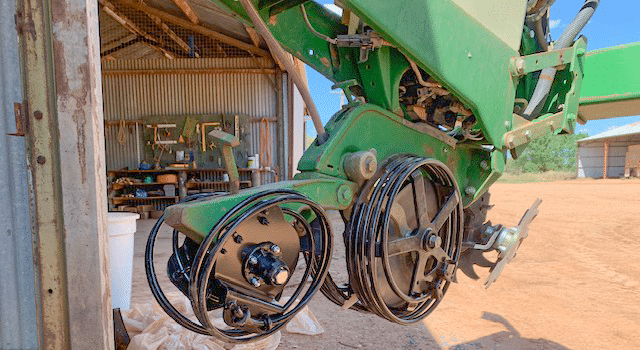
RYAN NT Coil Gauge and Closing Wheels on John Deere Maxemerge Planter Row Units
Closing Wheels on your planter row units
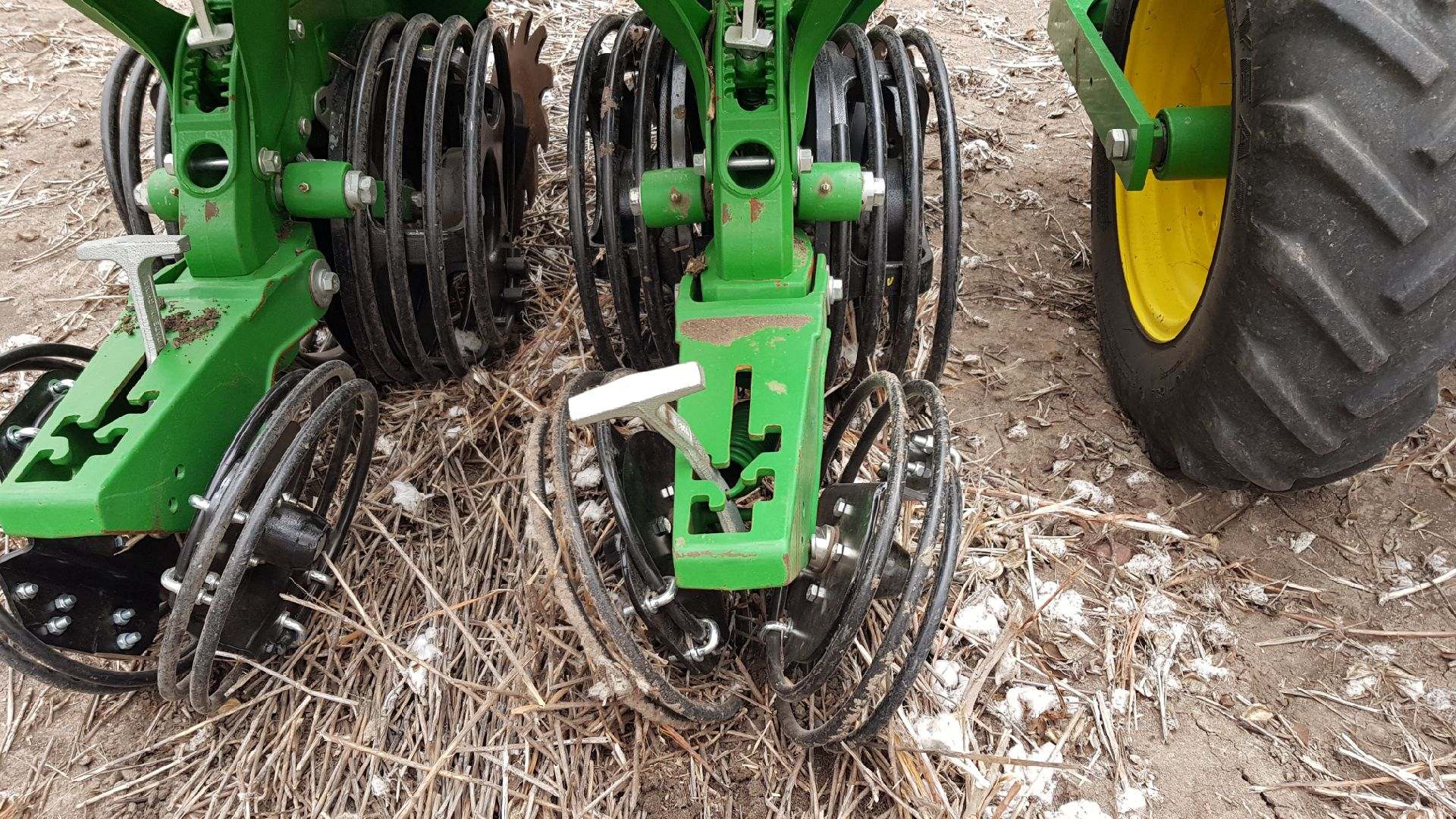
RYAN NT Coil Gauge and Closing Wheels on John Deere Planter Row Units
The closing wheels are a crucial part of your planter row units. Their primary function is to ensure that your seed trench created by the opening discs is adequately closed to provide the correct seed-to-soil contact. If your closing wheels are not correctly adjusted, air pockets can remain in the trench, leading to uneven emergence.
We recommended that your centre the closing wheels over the trench. Pull the planter through the paddock and ensure that each closing wheel runs level and centred over the trench to check if they are correctly centred.
RYAN NT Offers great trench-closing closing wheel
RYAN NT offers a coil closing wheel that self-cleans and closes furrows firmly and eliminates air pockets to enhance seed-to-soil contact. Further, the wheels are made with spring steel, meaning you won't need to replace splitting or deteriorating rubber wheels.
Finally, we designed the coil wheel to easily replace worn cast or rubber closing wheels while using existing equipment and parts.
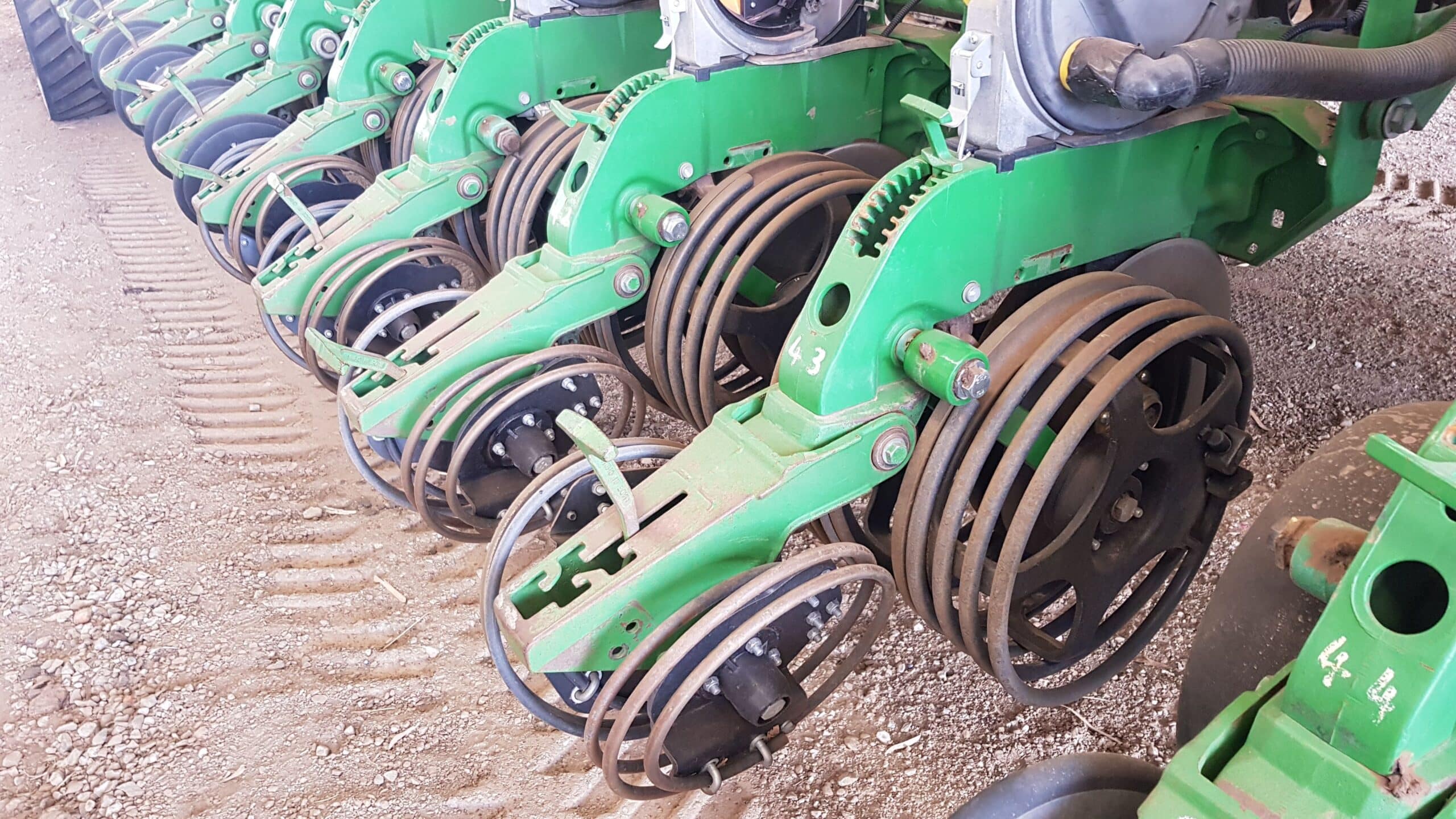
RYAN NT Coil Gauge and Closing Wheels on John Deere Exactemerge Planter Row Units
You should also think about…
Using high-quality planting products can also help improve planter performance. For example, precision planting technology such as GPS-based auto-steer systems can help ensure that the planter runs straight and provides consistent seed placement.
Also, high-quality seed treatments and fertilisers can help you promote healthy plant growth and maximise yields.
Conclusion
Regular planter maintenance will keep your planter in excellent condition and ensures maximum yields and profitability.
These tips on planter maintenance for your planter row units, such as regularly inspecting and replacing worn parts, shimming the opening discs correctly, adjusting the gauge and closing wheels, and using high-quality planting products, can help prepare the planter efficiently for the upcoming planting season.
By doing proper maintenance and using high-quality planting products you can ensure your planter performs optimally, resulting in a more productive and profitable growing season.

